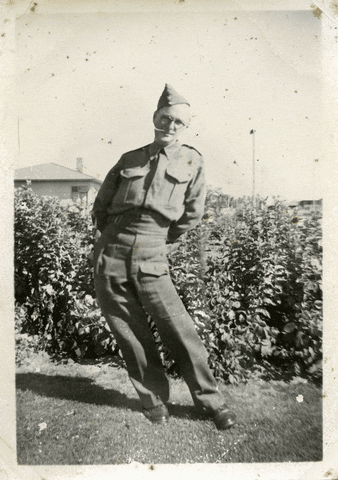Music is what is known as a temporal, or time-based, art form. Music relies on the passage of time to even exist. Other forms of art, like paintings and sculptures, don’t necessarily need time to pass in order for them to exist. They certainly do need time to pass for people to observe them existing, but they do not rely on the the passage of time itself for their existence. This makes them static art forms. Music, on the other hand, absolutely cannot exist without the passage of time, which is what makes it a temporal art form. An object that can vibrate, and thus produce the energy required for us to hear it make “sound”, needs time to pass for the vibration to occur.
No time, no vibration, no sound.
And Now, a quick word from our sponsor:
Syntorial
Learn MoreThank you, and now back to our content...
Time
Time
noun
The indefinite continued progress of existence and events in the past, present, and future, regarded as a whole.
But what does time mean in relation to music? How do we perceive the passage of time in music and how does it relate to notes and chords and sounds? Is it rigid? Malleable? Is is explicit? Implied? What does it mean?
To really understand time in music we need to consider it’s implications upon everything in music and how they in turn relate to each other as well.
Speed
Speed
noun
The rate at which someone or something is able to move or operate.
At the most fundamental level, time is the measurement used to define speed in music. And the most fundamental use of speed in music is to measure the Frequency of something.
Speed, Part One: Frequency
Audio
Many, many frequencies.
This sound is creating a vibration, which our ears can perceive, but the rate, or speed, of the frequency that it is playing is constantly changing. It should sound like it’s moving up and down all the time in varying amounts.
Sometimes it moves more quickly.
Sometimes it move more slowly.
But in the end it is always moving and changing and keeping our ears guessing. This is what makes the sound interesting to our ears, and therefore, our minds.
Audio
One continuous frequency.
This sound is creating a vibration as well, but unlike the previous example, it is maintaining the same rate, or speed, of vibration, from beginning to end. This seemingly simple concept has profound implications, as it essentially lays the foundation for the concept of “music” as we know it. Sound is created all around us, all the time, since almost everything that exists can vibrate and create what is called “mechanical energy”. This is the type of energy that is needed to make sound in our minds. Another fun little bit of information. Sound doesn’t really even exist, so to speak.
…come, again?
Well, mechanical energy makes the air around an object move back and fourth, or oscillate.

These oscillations travel to our ear, where the anatomy of our ear picks up that energy and transforms it into electrical impulses, which are then sent to our brains. Our brains end up interpreting the mechanical energy as “sound”. In the end, the “sound” that we hear only ever really exists in our minds.
When a frequency of vibration maintains the same speed for long enough our minds start to interpret that sound as musical. From this idea we can derive the concept of a pitch, and from pitch we can derive the concept of a note, which is a nice abstraction on top of pitch, which is a nice abstraction on top of frequency.
Essentially:
Frequency > Pitch > Note
Fast, faster, and fastest
The speed of oscillation of what we would call a musical note is actually rather fast. In fact, we are talking about speeds that are faster than the human ear can discern.
I’ll show you what I mean: Here is a kick drum, playing at a very slow rate of speed. To be specific, (roughly 😬) 1 kick drum per second, for a few seconds:
Audio
One Kick Drum per second
It is easy for the human ear to discern the space between each kick drum hit, and therefore, distinguish each kick drum as an individual sound.
Now, here is the same exact kick drum, but played (roughly 😬) 131 times per second, for a few seconds.
Audio
131 Kick Drums per second
This is a very different kick drum experience. It almost sounds like a pitched instrument. Kick drums are still being played, but the speed at which they are being played makes it impossible for the human mind to distinguish one kick drum from the next one. The kick drums start to blur together into one single sound.
Just so you can be sure that what you are hearing is true, here is the same kick drum, just starting out slow (a little faster than one kick per second) all the way up to full speed ahead at 131’ish (close enough 🤪) kicks per second:
Audio
From slow kicks to fast kicks
Phunnn! 🤗
But it wouldn’t be any fun if I simply showed this to you without letting you try it out for yourself, now, would it? Use the component below to play with the rate of playback yourself. Turn on the loop and adjust the rate in Hertz (Hz) and enjoy the transformation from kick drum to instrument!
Audio
Click / Touch
Un-mute iOS devices to hear sound.
Level
FS
Speed
Hz
So, hopefully the concept of time as it relates to the concept of music is starting to take shape in your mind. But there are even more ways in which time interacts with, and lays the foundation for, music. Oscillations aren’t the only game it town.
Speed, Part Two: Tempo
We gonna slow it down a little bit now…
…slower…
…slower still…
…getting there…
…almost…
…got it…
…you see, when we talk about oscillations, we are (usually) talking about very fast speeds. But when we switch up the conversation and talk about very slow speeds, things change.
Remember the first kick drum example? One kick per second? If you don’t:
Audio
One Kick Drum per second...again
That is a slow speed, relative to hundreds or thousands of oscillations per second. And this conversation leads us down a very different path…that of the path of the tempo.
Tempo of Groove
If our kick drum is playing once a second, that would mean that it is also playing 60 times per minute. And if we keep going with this idea and abstract away the term “kick” with something a bit more generic, like, say “beat”, then we arrive at another fundamental idea of music. That of BPM, or “Beats per Minute”.
60 bpm is rather slow, as you can probably gather, but we can, of course, make our bpm faster if we want. What if we played two kick drums a second? That would be twice as fast as one kick per second, of course, but how would that affect our perception of the kick?
Audio
Two Kick Drums per second
Much more exciting, don’t you think? Doubling the rate, or speed, of kicks increases the drive, intensity, activation, motion, etc…a bunch of terms that we will dig much deeper into later on. But the basic idea is that the faster the tempo, the more energy is injected into the music. Two kicks per second will translate into 120 bpm.
So, we’ve discussed the idea of the bpm…but there are other words that describe the same thing…and they fall under the umbrella term “Tempo”.
The speed of a piece of music is what is known as it’s tempo. This word is in reference to the idea that we can choose a speed for the music that is not necessarily tied to the speed of your average clock, although one could make their music the same speed as the seconds hand on a clock, if one wanted to. But a clock is not necessarily meaningful in it’s own right, either.
Ultimately, we can make the tempo, or BPM, of our music any speed we want, and that choice will greatly impact how the music is perceived by our audience. And once a tempo is chosen, we can start to think about another fundamental concept in music, that of rhythm, which we can build on top of, and in relation to, our tempo.
This is as far as we are going to go with the concept of time as it relates to music, because to go any further we need to start thinking about what we can do with time, and that is where the concept ofRhythm comes into play.
If you enjoyed this article and found it useful,
then please consider donating to support :-)
If you enjoyed this article and found it useful, then please consider donating to support :-)
